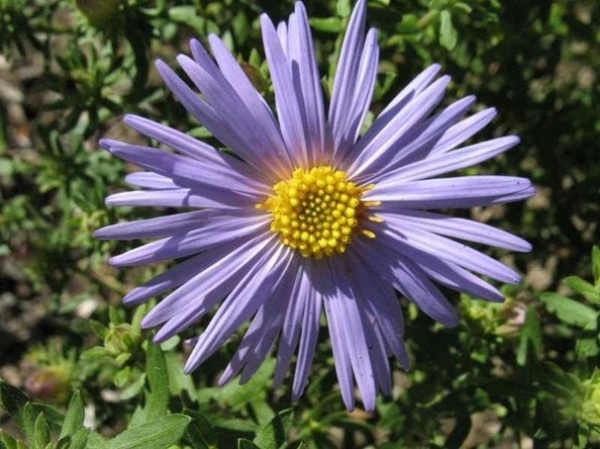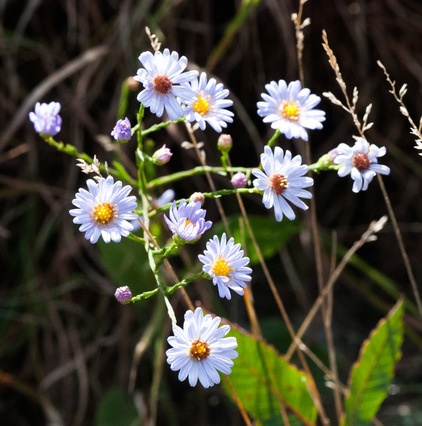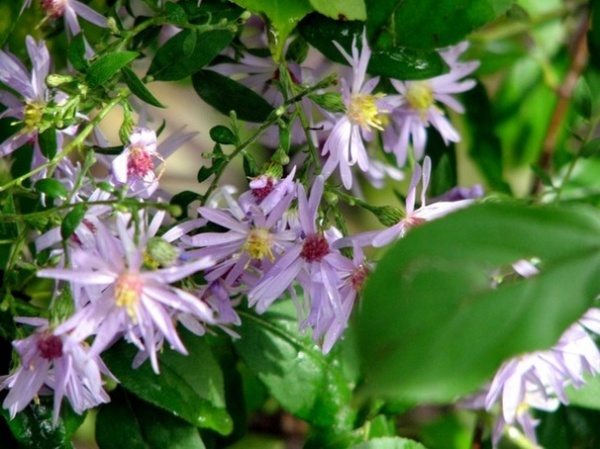Great Design Plant: Skyblue Aster (Symphyotrichum Oolentangiense)
http://decor-ideas.org 09/18/2015 00:14 Decor Ideas
There’s so much to like about skyblue aster (Symphyotrichum oolentangiense), a drought-tolerant, highly adaptable central U.S. native. It swarms with pollinators, has tall masses of bright flowers in fall and is a host plant to butterfly and moth species.

Botanical name: Symphyotrichum oolentangiense (formerly Aster azureus)
Common names: Skyblue aster, sky blue aster, azure aster
Origin: Native to New York and from Ohio south to Alabama and west from South Dakota to Texas
Where it will grow: Hardy to minus 40 degrees Fahrenheit, or minus 40 degrees Celsius (USDA zones 3 to 8; find your zone)
Water requirement: Medium to dry soil of any type
Light requirement: Full sun to a bit of shade
Mature size: 2 to 3 feet tall and 1 foot to 2 feet wide
Benefits and tolerances: Drought tolerant once established in sandy, loamy or clay soils
Seasonal interest: Blooms in early to mid fall with bright blue to violet flowers
When to plant: Plant potted or bare-root plants in late spring to late fall; sow seeds in late fall through late spring.

Distinguishing traits. Skyblue aster forms a pleasing mound of arching leaves and short, erect stems that lasts through summer; the lower leaves are larger and tend to be heart-shaped. Tall, thin stems shoot up as fall starts, with masses of bright pollinator-attractor flowers following soon after. Seeds form after the flowers, which bring in the birds.
How to use it. While it can take dappled shade, skyblue aster needs full sun for more robust growth and more blooms. Consider using it as an architectural specimen among shortgrasses like sideoats grama (Bouteloua curtipendula), little bluestem (Schizachyrium scoparium) and prairie dropseed (Sporobolus heterolepis), or plant it in masses for more showstopping punch from a distance — massing provides more of a beacon to pollinators. Many native bee species forage only on asters, and larvae of the silvery checkerspot and pearl crescent butterflies feed on the leaves, as do several moth species.
Photo by Joshua Mayer

Planting notes. Skyblue aster may self-sow in open ground and ideal situations, but it tends to stay put in a thickly planted garden, where competition is high. It thrives in drought conditions and is fairly adaptable to sandy, loamy and clay soils, even those that are somewhat rocky.
Fall is a great time to put new plants in the ground, as they’ll root and become establishd for the next year; sow seeds after a few hard freezes, anytime over the winter or in spring after the danger of frost has passed.
Photo by elizabethtrittipo
More
6 Overlooked Asters for Tough Spots
Browse plants native to other regions of the U.S.
Related Articles Recommended












